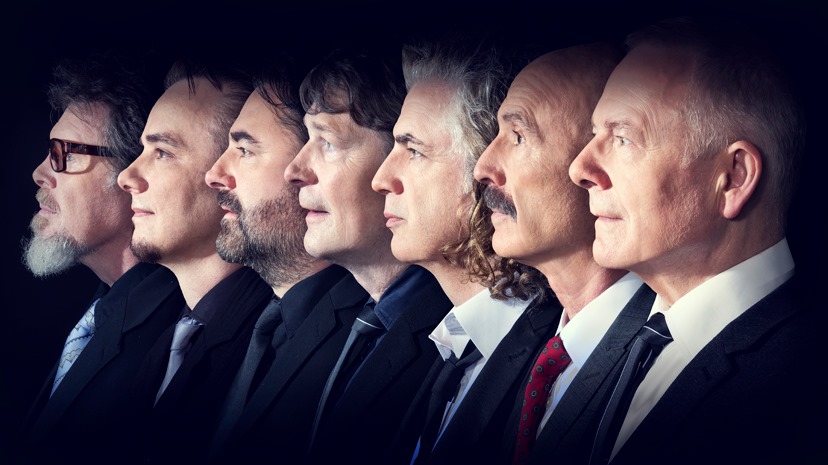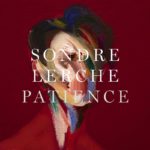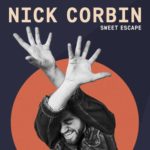Before I had seen King Crimson for the very first time – at Green’s Playhouse in Glasgow on the 1st of December 1972 – the band who had formed in London just over four years earlier had already released four studio albums; performed at Hyde Park in front of half a million people as one of the support acts at The Stones in the Park free festival (an event planned as an introduction to the Rolling Stones’ then new guitarist, Mick Taylor); and gone through numerous changes in personnel, an ongoing feature of their career that now stretches back for more than half a century.
Such was its huge impact, the memory of my first King Crimson show still lingers long in the memory. Green’s Playhouse was a magnificent dilapidated monster of a building. Opened in 1927 it was an entertainment complex featuring a cinema, ballroom and tea room, with the cinema alone seating more than 4,000 people. That night nearly 50 years ago the old place was packed to its creaking rafters and the atmosphere was electric. With the strains of The Heavenly Music Corporation (from the as then unreleased debut studio album from Fripp & Eno, (No Pussyfooting)) filtering through the building’s crackling PA, we waited for Crimson’s appearance in near total darkness and with huge anticipation.
Jamie Muir, the band’s percussionist, burst onto the 12 foot-high stage looking like an extra from the Raquel Welch film One Million Years B. C., dressed as he was in animal skins, brandishing industrial chains and with blood capsules fulminating from his mouth. Robert Fripp (King Crimson’s guitarist, founding member and the band’s de facto leader), David Cross (violin), John Wetton (bass guitar and vocals) and Bill Bruford (drums) followed on closely behind. The five men introduced us to what would be the opening track from Larks’ Tongues In Aspic, the band’s fifth album due to be released the following March. Even by Crimson’s already dramatic standards, this was a radical, far more adventurous piece of music, one that further diversified and developed the word progressive as it was presented in the genre term prog rock.
By the time we were bombing down Renfield Street more than two hours later to catch the last train back to East Kilbride with the thunderous encore of 21st Century Schizoid Man – a song that rightly remains as King Crimson’s signature tune to this very day – still ringing in our ears, we had experienced a musical phenomenon marked by intelligence, improvisation and sheer amazement.
By October 1973 I had seen King Crimson three times – the second and third occasion at the Glasgow Apollo which was, in fact, just the Green’s Playhouse but with a new lick of paint and a building rebranding – as they toured relentlessly. Such was the band’s boundless energy and untrammelled creativity by the following October they had released two more studio albums, Starless and Bible Black and Red.
In September 1974, though, Robert Fripp announced that King Crimson had “ceased to exist” and the band went on the first of what would be a number of similar hiatuses throughout the course of their lifetime. Yet in the preceding six years and through the course of three major line-ups King Crimson had created a sufficiently significant and distinct body of work that if they had never reconvened it would surely on its own have elevated them into “one of the greatest British bands of all time” category.
King Crimson’s first two albums – In The Court of the Crimson King and it’s younger sibling In The Wake of Poseidon – may well have laid down the template for prog rock but by encompassing elements of psychedelia, free jazz and metal into their sound they stretched those amorphous boundaries to places that lay far above and beyond what was routinely viewed by many as being the ridiculously ornate, overly bombastic and, quite frankly, downright self-indulgent.
In many people’s minds King Crimson’s third album Lizard is their least satisfactory from this period, but in amongst its often inconsistent and directionless chaos – something that was perhaps informed by the band’s rapidly evolving dramatis personae – there are some exceptional moments, not least the melancholic fractured beauty of Fripp’s guitar solo on Prince Rupert’s Lament.
The ensuing Islands is a far more coherent record. Putting to one side the blatant misogyny of Pete Sinfield’s lyrics on ‘Ladies of the Road’ – something that Richard Palmer-James regrettably repeats on ‘Easy Money’ from the band’s next album (Sinfield had gone by that time) – Islands matches what is often quite breathtaking neo-classical, pastoral beauty (ergo ‘Prelude: Song of the Gulls’ and the record’s majestic title track) with dark, destructive dissonance (‘The Letters’).
Islands also boasts ‘The Sailor’s Tale’ and what has to be one of Robert Fripp’s most astonishing guitar solos, a fierce frenetic maelstrom of noise that compresses fluency with fire. Fripp himself has since remarked that it is “one of the few guitar solos in King Crimson which I think is on a par with my work with Eno and Bowie. It has all the intensity; it is terrifying stuff.”
In the studio and in concert King Crimson were two different musical animals. But if you want to hear an example of when one replicates the other listen to ‘The Sailor’s Tale’ as performed on Earthbound, the very first (of what would become 15 and counting) Crimson live album. Released eight months after Islands it captures that incarnation of the band – Fripp, Mel Collins (saxophone), Boz Burrell (bass guitar and vocals) and Ian Wallace (drums) – teetering on the verge of total collapse during their last American tour together.
The sound quality on this record is poor – something akin to an audience bootleg recording – but it does capture perfectly the taut, tense on-stage dynamics and some of the playing on these tracks is absolutely frightening – real eyes-peering-through-fingers stuff – and no more so on ‘The Sailor’s Tale’ and what for me is the greatest, most powerful, most intense, most scary version of Schizoid Man I have yet to hear.
Larks’ Tongues In Aspic and Starless and Bible Black saw Crimson move into new musical territory, a landscape configured by fresh ambition, experimentalism and creative abandon. Both records achieve a wonderful artistic balance between blistering ferocity and delicate calm (evidenced by the former’s title tracks, Parts 1 and 2, and ‘Book of Saturday’; the latter’s ‘Fracture’ and ‘The Night Watch’).
By 1974 King Crimson had, essentially, been distilled into a power-trio comprising Fripp, of course, Bruford and Wetton and the three men form the nucleus of what for me and countless others is their greatest recorded achievement, the album Red. The picture of an old sound-balance meter on the back cover of the album as it tips ‘into the red’ reflects the potency, power and danger of what lies beneath the hood. It is a loud, uncompromising mesh of melody and noise. Fripp’s almighty guitar riff on the album’s title track possesses such barely constrained muscle you feel at any moment it will most surely knock your head right off. ‘One More Red Nightmare’ presages post-rock by years and the concluding ‘Starless’ – a thrilling switchback ride of structural, and emotional, ascent and descent – has to be the greatest single song ever recorded by King Crimson and is the perfect valediction to this period in the band’s career.
Seven years later and King Crimson were back but in a markedly different guise. Bill Bruford was still there but this time round he and Fripp were joined by guitarist and singer Adrian Belew – a man who had served time with Frank Zappa, David Bowie and Talking Heads – and bass guitarist and Belew’s fellow American, Tony Levin who most recently had been playing in Peter Gabriel’s band.
This radical reincarnation of King Crimson was not only spearheaded by the twin guitars of Fripp and Belew but it was also greatly influenced by the Gamelan music of Indonesia with its strong emphasis upon cyclical repetition and interwoven chord sequences. Capturing the pioneering spirit of these post-punk times, this quartet released three albums – Discipline (1981), Beat (1982) and Three of a Perfect Pair (1984).
Polyrhythmic by design this trio of records retained much of King Crimson’s historic cerebral complexity in its execution but to those characteristics they had added a contemporaneous cosmic vibe and hitherto undetected funkiness. But shorn – thankfully so, many might argue – of much of its overblown 70’s prog flourishes and accompanying improvisation (though ‘Requiem’ from Beat and much of the second side of the vinyl copy of Three of a Perfect Pair are notable exceptions in this regard) this version of King Crimson and the trilogy of records it created often fare much less favourably than the band’s 70’s output when seen through the rear view mirror of critical reappraisal.
This manifestation of the band foretold a lot of the friction, tension and downright aggression that would be a far more pronounced feature of the next two embodiments of King Crimson but set against this frequent freneticism and turbulence there were moments of simple enchanting beauty. This is no more so than on ‘Matte Kudasai’, the song’s delightful melody carrying an aching sense of longing on its shoulders, the feeling replicated in the empathic guitar interplay between Fripp and Belew.
Robert Fripp then put King Crimson into hibernation for another ten years, returning in 1994 with a further reconfiguration of the band. Perhaps rather remarkably given the strains that had surfaced during the latter stages of its previous incarnation, all four of those members were back on parade, this time joined by Trey Gunn and Pat Mastelotto on supplementary Chapman Stick and percussion respectively. The six musicians formed what Fripp described as a “Double Trio” with two guitarists, two bassists, and two drummers as he once more sought to realign King Crimson’s fundamental structure and push the band’s sound into even more uncharted waters.
Released in 1995, Thrak is the only full-length album recorded by this King Crimson line-up. The album cover portrays what looks like some piece of melted computer casing that may have blown due to an earlier power surge; it is an accurate indicator of the sound therein. Thrak does find Crimson at their most heavy yet, powerful splintered-metal spurting, often without mercy, from deep within its grooves. This is a much darker and more dense record than its three predecessors, these sensations affirmed by the opening track ‘VROOM’. But for all of Thrak’s frequent sheer molten brute force and in keeping with nearly all of the band’s previous ten studio albums these moments are interspersed by oases of elegance and calm. ‘Walking on Air’ ticks that particular box and the following track ‘B’Boom’ evidences the wisdom of adopting the double-drummer approach as Mestelatto and Bruford lock horns, and drumsticks, in mortal musical combat.
By the time of 2000’s The ConstruKction of Light long-standing members Bill Bruford and Tony Levin had departed and the four remaining musicians were realigned as a “Double Duo”, another fresh arrangement that had Crimson this time heading off even further into the darkness and in a general direction that had first been signposted by Thrak. Impervious at times, without too much of in the way of subtlety and full of obfuscated menace, the results are not entirely convincing as Crimson lurch headlong up some sort of nu-metal cul-de-sac. Whilst not completely without redemption – the title track, for one, packs a not inconsiderable sonic punch – The ConstruKction of Light probably marks the first major musical misstep in the Crimson canon, something with which Robert Fripp would seem to agree subsequently saying “it (the album) is utterly without compromise. Most people will hate it.”
Three years later King Crimson released their 13th, and what is to date their last studio album, The Power to Believe. Perhaps defying conventional Crimson wisdom, the quartet of Fripp, Belew, Mastelotto and Gunn was still together. Much of the opacity of The ConstruKction of Light had thankfully dissipated in the interim. There are still remorseless moments of relentless chord progression whereby Crimson go off in hot pursuit of some new form of metal machine music – ‘Elektrik’ being a prime example – but this is tempered by the introduction of modern electronic frippery and further offset by being weighed against songs like ‘Eyes Wide Open’ that possess an almost quintessential beauty.
And that would appear to have been that. Another ten years elapsed without any fresh King Crimson activity. But then in September 2013 Robert Fripp blithely announced without word of warning yet another return for King Crimson, this time with “a very different reformation to what has gone before: seven players, four English and three American, with three drummers”.
This new unit, King Crimson Mark VIII no less, presented members both old and new. Back in the fray once more were Pat Mastelotto and Tony Levin, as was Mel Collins, returning for the first time proper since 1972. Mastelotto was joined in a frontline (for live performances) by two more drummers, Gavin Harrison and Bill Rieflin. The back line of this so called “Seven-Headed Beast” comprising Levin, Collins, Jakko Jakszyk (guitar and vocals) and, naturally, Robert Fripp himself.
This conformation of the King Crimson creature – including from 2016, Jeremy Stacey on drums, who replaced Bill Rieflin after he had chosen to take a break from music due to health considerations (Rieflin sadly passed away in March of this year from cancer) – whilst not releasing any new material has toured extensively in the interim playing “reconfigured” versions of old songs, including for the first time since 1974, material drawn from their first seven studio albums.
Having never thought I would ever again see King Crimson in concert, on the 11th of September 2015 at Salford Lowry Theatre I had the immense privilege of finally doing so. Reviewed HERE, this incredible, exhilarating experience not only took me back some 40-odd years in time to those first shows of theirs I had seen in Glasgow but reinforced my view of King Crimson as being one of, if not the best British band of all time.
Main image courtesy of the King Crimson Facebook Page




